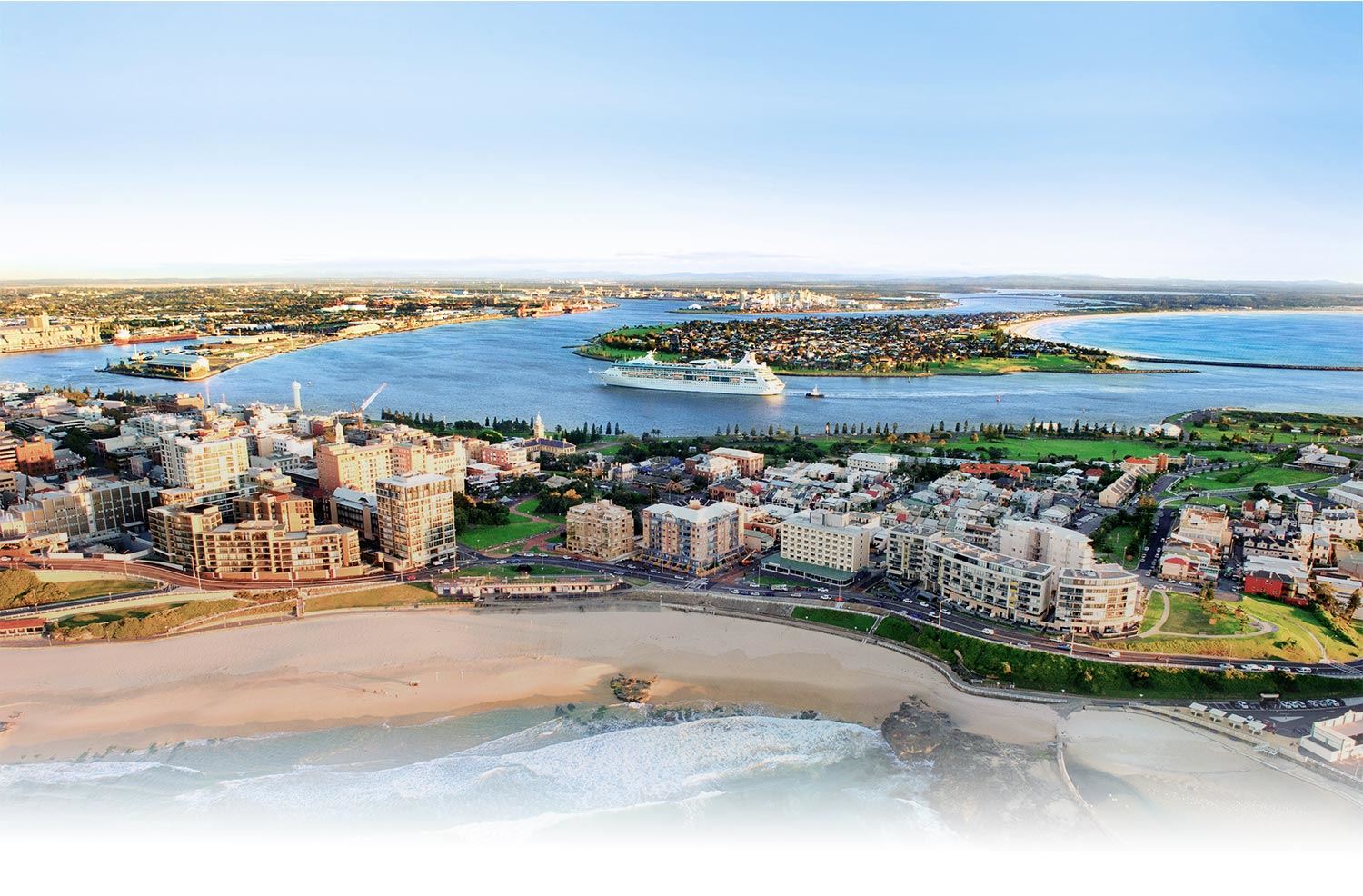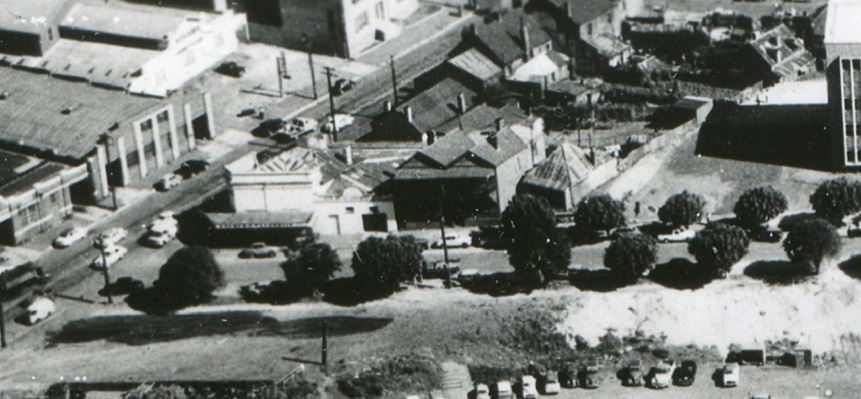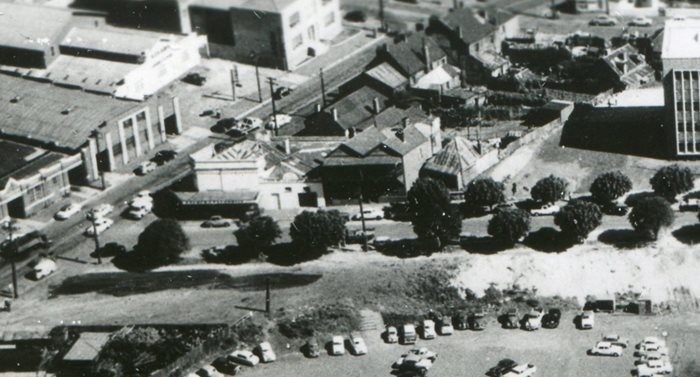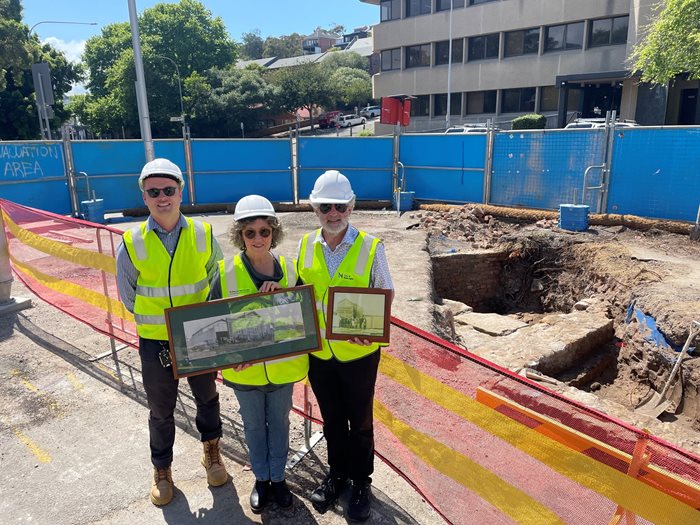
History of the site

A look back through time
Traditional custodians
The Awabakal and Worimi peoples are the traditional custodians of the land in the Newcastle area, and their heritage and cultural ties to Newcastle date back tens of thousands of years.
European settlement
The discovery of coal around the mouth of the Hunter River led to the establishment of a penal colony, then commercial and industrial expansion. In the late 1820's Australian Agricultural Company (A.A. Co.) was granted 200 acres of land which was mined for coal.
Homes, hotels, and a cordial factory
A.A. Co,’s land was subdivided in the early 1850's. A.A. Co's chief surveyor Charles Darby allocated himself the first plot of land on the north-facing block on the corner of Laman and Darby streets.
Above: Hunter Water Map from 1898 showing Darby's land roughly outlined in blue.
Darby’s house stood on the north-eastern corner of his property, and over the years was used as a cordial factory, a hotel, a drapiers, and a condiment factory before being demolished to allow for the construction of the art gallery in 1977.
Above: Aerial image of Civic Park circa 1960 showing the site at the top left
 Above: Aerial image showing the Volunteer Hotel to the left of the site, circa 1960's
Above: Aerial image showing the Volunteer Hotel to the left of the site, circa 1960's
Above: Image of the former Volunteer Hotel, now shown as a condiment factory at the corner of Laman and Darby Street, 1969, from the collection of Merv and Janet Copley.
Making way for Newcastle's Gallery
In 1945, Dr Roland Pope, an ophthalmic surgeon from Sydney with familial connections to Newcastle, promised the bequest of his art collection of some 123 works of art to Newcastle, conditional upon the construction of an art gallery to house them. Pope's collection was held in storage for 12 years awaiting the Gallery's opening, which came in 1957, when 'Newcastle City Art Gallery', as it was then known, opened on the second floor of the War Memorial Cultural Centre, adjacent to the Gallery's current home.
The remaining homes and buildings were demolished in the 1970's to make way for the new Gallery. Led by director Andrew Ferguson, a purpose-built Gallery was constructed in the mid-1970s and officially opened by Her Majesty Queen Elizabeth II on Friday 11 March 1977. Applauded as a model for medium-sized galleries, it has an innovative floor plan and hanging system. Further, the building is also an important example of early 1970s architecture with its geometric forms and brutalist aesthetic. Newcastle City Council's architect Brian Pile was the designer of the present-day brutalist building.
For more information about the Gallery's collection visit nag.org.au/about/history
Recording this history
Before construction in this area starts we engaged a Heritage Consultant to undertake excavations and to catalogue and record their findings in line with Heritage Council of NSW guidelines and principles, and The Burra Charter which is considered the best practice standard for cultural heritage management in Australia.
Site investigations were undertaken using machinery and hand tools to uncover the foundations of buildings that occupied the site in the 120 years between the area's sub-division by A.A. Co. in the 1850's, and the construction of the Gallery in the 1970's.
These heritage works intriguingly connected us with the descendants of the Moore Family who established the cordial factory, giving us a special opportunity to share in the findings and stories during a site visit with Austral Archaeology.
 Above: Image showing members of the Moore family and CN's Project Manager during a visit to the site.
Above: Image showing members of the Moore family and CN's Project Manager during a visit to the site.













